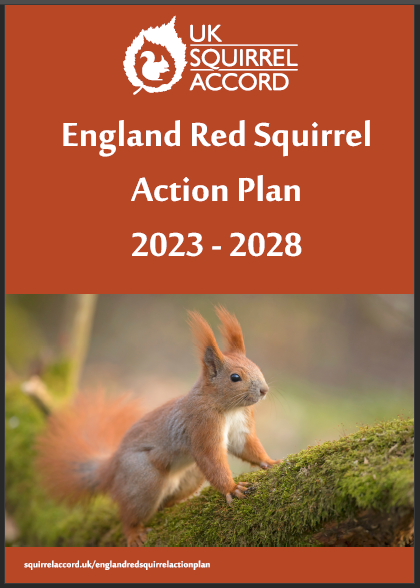How to help red squirrels thrive – Forestry Commission

Many of us recognise the charismatic red squirrel with their tufted ears as one of the most cherished sights in British woodlands.
They were once the only squirrel present in the UK, but spotting a red squirrel today is a rare treat.
Red squirrels need help
In England, red squirrels are endangered, with only about 38,900 remaining. They are now limited to specific areas such as parts of northern England, the Isle of Wight, and islands in Poole Harbour.
Did you know the biggest threat to red squirrels comes from their grey cousins? Grey squirrels, introduced from North America in the late 1800s, have dramatically impacted red squirrel populations. Not only do greys outcompete reds for food, but they also carry the squirrel pox virus. This virus is devastating for red squirrels, often fatal, while grey squirrels remain largely unaffected. In areas populated by grey squirrels, red squirrels are usually lost within 15 years.
In the past, red squirrel habitat has come under pressure, for example the loss of ancient woodlands over the past century to urbanisation and agricultural expansion.
So, what can we do to help? Creating new woodlands and actively managing existing forests are crucial steps in red squirrel conservation.

Providing the right habitat
Red squirrels are surprisingly adaptable when it comes to choosing where to live. They can make their homes in both broadleaf woodlands – especially those rich in hazel nuts – and conifer forests.
What does it take to support a thriving red squirrel population? Woodlands need to be carefully managed to provide favourable conditions. Ideally, red squirrels require habitats of at least 200 hectares in size as these larger habitats offer the diversity and resources needed. However, smaller woodlands can still be suitable if they are well-connected and consist of favoured tree species that provide ample food and shelter.

Designing resilient woodlands for red squirrels
Creating woodlands that support red squirrels while ensuring long-term sustainability requires thoughtful planning and design. Whether you’re managing a forest for conservation or productivity, the right approach can make a difference. In establishing a new woodland, you need to choose the right location that doesn’t allow grey squirrels to move through the landscape to areas that are already red squirrel strongholds.
Here are listed some key strategies for designing red squirrel-friendly woodlands:
Manage with continuous cover in mind – aim for a mix of tree and age classes to provide a continuous supply of food.
Plan for wind damage – include low-growing or wide-spaced trees that won’t get too tall. These can act as permanent corridors and reliable food sources, even if other trees are blown over by wind.
Address grey squirrel presence – in areas with grey squirrels, plant a mix of conifers to discourage them, while still benefiting red squirrels. Plant red squirrel-friendly trees in groups along woodland edges to create safe spaces for them.
Optimise the woodland layout – plant trees facing south with irregular edges to improve seed production. Long, south-facing edges along east-west paths are especially good at increasing food supply.
Think about the future – consider how climate change might affect the trees you plant and choose species that will thrive in changing conditions, helping red squirrels in the long term.
Managing grey squirrel populations
One of the most impactful ways forestry managers can support red squirrel populations is by implementing effective grey squirrel management – read more on how to manage grey squirrels and key considerations in our visual guide. Establishing buffer zones can also help, these are areas where grey squirrels are less likely to thrive, which can help keep them at bay and protect local red squirrel populations. By combining these measures, forestry managers can make a real difference in safeguarding red squirrels for the future.
By combining these strategies, you can create woodlands that not only benefit red squirrels but also thrive as diverse, resilient ecosystems. Careful planning today ensures that future generations of red squirrels – and woodland managers – can enjoy healthy, vibrant forests.

There is support available to create new woodlands
Landowners, land managers and public bodies can receive over £10,200 per hectare to create new woodland on areas as small as one hectare via the England Woodland Creation Offer (EWCO).
For proposed woodlands of more than five hectares there is also a Woodland Creation Planning Grant (WCPG) available up to £30,500. This is to help plan a UK Forestry Standard (UKFS) compliant woodland and includes funding for surveys that might be needed.
For further information on the grants available, visit the tree planting and woodland creation overview on GOV.UK.
In addition to the funding that is available, Forestry Commission Woodland Officers and Woodland Creation Officers can provide help and advice on planning, planting and maintaining a woodland. To access this free advice, contact your local Forestry Commission team.
For further information on creation and management of woodland for red squirrels, visit red squirrels and forestry operations in England – operations note 65.



